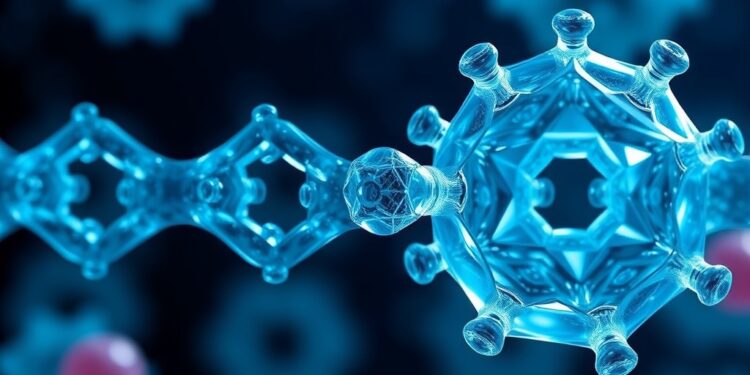A groundbreaking study conducted by a team from Hebrew University and Stockholm University has revealed critical insights into one of the most fundamental chemical reactions known in acid-base chemistry: the mutual neutralization of hydronium (H₃O⁺) and hydroxide (OH⁻) ions. This research challenges the long-standing belief regarding proton transfer as the driving force behind this reaction, instead highlighting electron transfer as the main mechanism responsible for generating hydroxyl radicals (OH). These radicals are pivotal in various fields such as atmospheric chemistry, air quality monitoring, climate science, and even biochemical processes within the human body.
At the heart of this study lies the experimentation conducted at the DESIREE facility in Stockholm, a rare platform that allows scientists to track the subtle interactions between isolated ions and observe the results of their neutralization reactions in real time. By employing deuterated water ions and employing advanced three-dimensional coincidence imaging techniques, the researchers were able to gain insights into the products formed when hydronium and hydroxide significant electron transfer occurs.
The surprising findings indicate that this electron transfer phenomenon, rather than the expected proton transfer, leads to an efficient formation of hydroxyl radicals, enabling the neutralization process under isolated conditions. The new mechanisms indicated that hydroxyl radicals could form spontaneously at lower temperatures without needing a catalyst or an external energy source. This alters basic assumptions regarding the dynamics of acid-base reactions and opens up new avenues for understanding atmospheric processes where hydroxyl radicals are paramount.
Prof. Daniel Strasser, who led the study, noted the implications of these electron-transfer mechanisms extend beyond mere academic interest. His assertion underscores the potential for groundbreaking advancements in our understanding of quantum mechanics, particularly in how these electron dynamics unfold during chemical reactions. Such insights could reshape theoretical modeling efforts in quantum chemistry, especially concerning non-adiabatic processes where electron states experience rapid transitions.
The researchers also recorded the distance at which an electron transitions from hydroxide ion to hydronium ion. Previous studies had indicated that electron transfer contributes significantly to the final products of chemical reactions. This latest research has found that transfers occurring at approximately 4 Ångströms resulted in the formation of water and hydrogen byproducts, while a longer distance leap of about 9 Ångströms produced two hydroxyl radicals accompanied by molecular hydrogen.
This knowledge not only sheds light on the fundamental principles governing acid-base chemistry but also contributes to addressing prominent environmental issues. The team had previously established a link between the mechanisms involved in electron transfer and their real-world implications by indicating how hydroxyl radicals contribute significantly to the oxidation processes in our atmosphere. And their discovery regarding the spontaneous formation of hydrogen peroxide at the surfaces of water microdroplets challenges established notions in atmospheric chemistry.
Dr. Richard Thomas emphasized that effectively visualizing these mechanisms introduces a new dimension to our understanding of chemical action in microenvironments like water droplets. The observed spontaneous creation of hydroxyl radicals and subsequent hydrogen peroxide formation on pure water microdroplet surfaces signifies a potential shift in prevailing theories regarding the atmospheric conditions. This could lead to improved pollution control measures and a deeper understanding of how these chemical reactions operate in natural environments.
Furthermore, the study highlights the relevance of non-adiabatic dynamics, a crucial aspect in chemical reactions that often goes unrecognized. These processes are widespread in crucial fields such as photochemistry, ionization, and recombination reactions. Yet, accurately predicting the outcomes of non-adiabatic events remains a challenge in quantum chemistry. By providing new experimental evidence, this study enhances researchers’ ability to refine theoretical predictions and improve our understanding of non-adiabatic interactions with profound implications for various domains.
By paving the way for future investigations into non-adiabatic reaction dynamics, this current research fosters curiosity not just within the confines of acid-base reactions but extends into diverse fields such as environmental and biomedical research. The implications extend from atmospheric chemistry in understanding how hydroxyl radicals drive oxidation processes to modeling chemical reactions under extreme conditions found in interstellar space.
The collaboration between Hebrew University and Stockholm University showcases the power of teamwork in advancing knowledge and tackling complex chemical phenomena. As more scientists delve into this field, it is hoped that these insights will cultivate innovative approaches to environmental challenges, improve air quality, and even influence medical sciences by shedding light on new pathways and mechanisms involved in biochemical reactions within the human body.
In summary, the mutual neutralization of hydronium and hydroxide ions has been redefined through the lens of electron transfer mechanisms. By revealing unexpected pathways for hydroxyl radical formation, the research implies significant changes in how we understand atmospheric chemistry and its broader implications for the environment and human health. This exploration into electron transfer dynamics will undoubtedly spark further investigations into chemical behavior in other systems, paving the way for potential new discoveries.
Subject of Research: Mutual neutralization of hydronium and hydroxide ions
Article Title: Unravelling non-adiabatic pathways in the mutual neutralization of hydronium and hydroxide
News Publication Date: 25-Mar-2025
Web References: Nature Chemistry
References: Available in the referenced journal article
Image Credits: Not applicable
Keywords
Atmospheric chemistry, Theoretical chemistry, Electron reactions, Quantum chemistry, Medicinal chemistry, Surface chemistry, Surface water acidification, Electron transfer, Energy transfer.
Tags: advanced three-dimensional coincidence imagingbiochemical processes of hydroxyl radicalschallenges to proton transfer theoryDESIREE facility researchelectron transfer in acid-base reactionsgroundbreaking acid-base chemistry studyHebrew University and Stockholm University collaborationhydronium and hydroxide ion neutralizationhydroxyl radicals formation mechanismsimpact on atmospheric chemistryisolated ion interactions in chemistrysignificance in air quality monitoring





